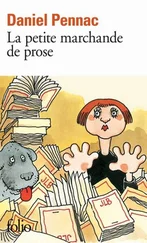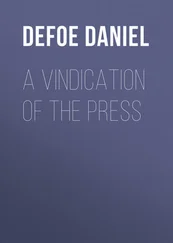In 1835, Richard Adams Locke, a cheeky young reporter for the New York Sun , used astronomy instead of astrology to trick the masses. Trading in on the name of Sir John Herschel, a renowned British stargazer, Locke invented the tale of a giant new telescope that revealed the existence of unicorns and bat-winged people on the moon. His continuing chronicle of Herschel’s “discoveries” was so successful that competing papers ran sensational confirmations of the story, just to get a contact sales high. Eventually Locke’s own big mouth did him in, but nobody seemed to mind being duped. Even Herschel himself took it with good humor, months later, when the story finally caught up to him at his observatory in South Africa. The only one left grumbling in his absinthe was Edgar Allan Poe, whose own attempt at a moon-related hoax was eclipsed by the Sun .
Not all fabrications were driven by greed. In 1874, Joseph Clarke, a writer for the New York Herald , was so incensed by the cruel treatment of zoo animals that he vented his rage through a five-column fib. The animals have staged a mass escape! he declared. Two hundred beasts are running amok through the streets! People are being eaten by lions! Gored by rhinos! Trampled by hippos!
Word spread fast. All over town, screaming citizens boarded up their windows and huddled with their guns. Some even jumped into the river in hopes that the crisis was limited to land creatures. The most amazing part is that Clarke admitted in the last paragraph of the article that the whole thing was a gag. Apparently, no one read that far.
But when it comes to mass deception, nobody — and I mean nobody — holds a candle to William Randolph Hearst.
The son of an obscenely wealthy California senator, Hearst used his family fortune to become a newspaper magnate. His endless lust for sensationalism, plus his obsessive competition with rival Joseph Pulitzer (no angel himself), caused him to sink his numerous papers into new depths of putrescence. But I’ll give the man credit. Like no one before him, Hearst understood the winning elements of a good public drama. Moreover, he knew how to slip his personal agendas inside each tasty little distraction.
In 1897 one such agenda was the liberation of Cuba from Spain. It infuriated Hearst that the United States wasn’t intervening on our neighbor’s behalf. He tried for months to drum up public outrage through blood-curdling tales — mostly exaggerations and fabrications — of Spanish cruelty. This time his readers weren’t biting. They knew that outrage would lead to pressure, pressure would lead to war, and nobody wanted war. Nobody but Hearst.
That was when he learned of Evangelina Cosio y Cisneros, the lovely nineteen-year-old daughter of an elite Cuban family who was arrested on suspicion of aiding revolutionaries and sentenced to twenty years in a Moroccan prison. Bad news for her. Good news for Hearst. If anyone knew the marketing power of a tragic young hottie, it was him.
Quicker than you could say “Rosebud,” he turned her into a national crusade. He devoted over four hundred columns of text to his “Cuban girl martyr” and dispatched two hundred reporters to gather fifteen thousand signatures in a petition to free her. True to form, the public became engrossed in the plight of poor Evangelina, who had only fought to defend her virtue from a lecherous Spanish colonel and was now due to be sent to a North African penal colony filled with murderers, thieves, and ravishers, all of whom would compromise her virtue on a daily basis.
[Actually, she was arrested for seducing/distracting a prison guard during the escape of three rebels, and furthermore, it was unconfirmed that any sentence had been passed down on her at all.]
Despite Hearst’s best efforts, Evangelina continued to languish in a Cuban holding cell. The story began to die from lack of development until suddenly, bang! evangelina escapes prison! Hearst’s papers broadcast the amazing tale of Charles Duval, a stalwart man who, with little more than a chivalrous heart and a sturdy ladder, daringly rescued the pretty young maiden from her impending fate and smuggled her out of Cuba by disguising her as a boy.
[Actually, “Charles Duval “ was none other than Hearst’s trusted reporter, Karl Decker. And his daring rescue consisted of bribing every guard and his cousin. But the part about the boy disguise was true.]
Hearst couldn’t have been happier with the outcome. Evangelina was hailed as a hero upon her arrival in New York, where an extravagant hundred-thousand-person rally (funded by you-know-who) was held at Madison Square Garden. Later, she traveled to Washington, met President McKinley, and addressed Congress about Spanish oppression in her homeland. It wasn’t until her testimony that the government authorized the deployment of a thousand troops to Cuba, plus one battleship. That ship was the U.S.S. Maine , which eventually exploded and sank in the port of Havana. After that, armed conflict was a no brainer. America was all set for the Spanish-American War, furnished by none other than William Randolph Hearst.
It wasn’t the first time a pretty face had launched a thousand ships, and it wasn’t the last time a compelling young girl would be used to lure Congress toward military action. A group of Washington publicists pulled a similar trick in 1990. If you want that story, just go on the Web and search for “Gulf War” and “Nayirah.” You’ll get quite a tale.
I wasn’t part of that particular endeavor, but I knew one of the perpetrators quite well. In fact, I adored her. She was ruthless, brilliant, sexy and utterly unstoppable. Or so I thought at the time. That was the job that took Drea down. That was the gig that destroyed her from the inside out.
But all of that is history. Ancient history. My thoughts were aimed at the future. I was about to add a bold new chapter to the Big Book of Media Tricks. Nobody had ever attempted a two-layer deception like mine before. Nobody had ever dared to fake a hoax. But that’s just to my knowledge. After all, the best tricks are the ones that don’t make the Big Book at all. The best gags are the ones that, even centuries later, we have yet to catch on to.
On Monday morning, Annabelle Shane was laid to rest. The media presence at her funeral was paltry: two photographers, one from AP, the other from Reuters. They captured her burial through telephoto lenses and then quietly slipped away. Sometime over the weekend, the collective shock at her killing spree had worn off. The public eye was now officially fixed on the abominable Bitch Fiends.
Not that Annabelle minded. That was her plan all along. She didn’t want to be the show, just the opening act. She didn’t care if everyone loved her or not. She just wanted them to hate Bryan Edison.
Believe me, sweetheart, they’re working on it. His funeral, by contrast, was a blue-ticket event. News crews from every major network waited patiently at a distance, like a murder of crows. Once the procession let out, they squawked their rapid-fire questions, one atop the other, in the vain hunt for a quote, a bite, anything airable. The press was just gathering filler, of course. They knew the next big plot point would be coming from the L.A. County sheriff’s office. Most of them even knew, from tales told out of school, what that next plot point would be. But journalists still had a few standards left. They wouldn’t report on the Bryan/Annabelle rape tape until it became an official police rumor.
Either way, Bryan’s name was in for a solid trampling. Whether the odium was accurate or not, few would know and few would care. I, however, was a devil’s advocate by nature. Maybe he never molested Annabelle. Maybe he was simply a colossal jerk who had wooed her into sex, filmed it, and then replayed it for all his fellow Fiends. Maybe the humiliation of that was enough to send her over the edge. Or maybe he really was a monster.
Читать дальше











